Category: Cops
Ezra’s Escapades By Bart Skelton

The summer had been dry enough to choke greasewood, and the dirt roads in southwest New Mexico were blessed with fine, powdery dust 4 or 5 inches deep. Driving down any of them made for an experience kin to a hurricane hitting a talcum powder factory. My old pickup was covered with the fine powder inside and out from my several trips out to my desert shooting range. I’d been doing some accuracy work with some .44 Magnum handloads using Hodgdon 4227, and it had required multiple trips down several parched, dust-infused roads to get to the range.
As the sun started making its way down the last stretch to the west, I decided I needed to wash the dust out of my mouth and cool down a bit. I headed to the Adobe Deli, southwest New Mexico’s premier steakhouse, bar, and desert rat lair.
The place was dark and cool inside, and the first sip of cool libation was pure heaven. When my eyes had adjusted somewhat, I noticed an older gentleman sitting at a table on the other side of the room, watching me with a slight smile. His hat was tipped back, and he was nursing a cocktail. He nodded my way, and with a little more eye focus, I finally recognized him.
“Git over here, brother,” he said as I approached the table. He stood and gave me a hefty abrazo, then patted me on the back. “Damn good to see you son. You’re looking good.”
“You too ol’ pard,” I said. It’d been a while since I’d seen Ezra, but he hadn’t changed a bit. “Aw, work’s been busy,” I said. “Been out trying to gin up some good-shootin’ .44 Mag loads for a javelina hunt this fall.”
“.44 Mag?” he said with a grin. “It’ll work on ’em, but there ain’t no better javelina gun than a Winchester .32 Special you know.”
Ezra was a retired lawman, and he knew guns pretty well, but he limited his knowledge to just a few models in a few calibers. Probably good thinking.
“Yep, I popped my share of javelina down in South Texas–and in this New Mexico country, too,” Ezra said. “Never had much reason to shoot ’em though, since you can’t eat the damned things.”
When I attempted to explain to him that javelina were palatable when properly handled and prepared, his laughter caught the attention of several of the Adobe Deli patrons.
“Hell boy, they don’t even eat the suckers down in Mexico,” Ezra said with another belly laugh. “I heard once javelina tamales were sorta tasty, ‘cept you have to drink a whole bottle a mescal to wash the taste outta your mouth.”
“But that .32 Special, now that’s one heck of a cartridge,” Ezra continued, taking a long sip of his amber colored cocktail. “I used that Winchester 1894 carbine for a lot of years as a law officer, and I think it’s the best police long gun there is. Ol’ Joaquin Jackson was the one that got me to carrying one.”
My old friend Joaquin, now retired from the Texas Rangers, was always partial to the Winchester 1894 carbine, but in .30-30 rather than the .32 Special. “So, Joaquin put you on the ’94 for police work, huh?” I asked the old law dog.
“Yep, in .32 Special,” he replied. “Oh, I know Joaquin liked the .30-30, but, like I told him, the .32 Special’s a lot better.” Ezra took another sip of his drink, then reached with both hands to his shirt pockets, looking for a cigarette, though he’d quit long ago.
“Many years back, I’s a chasin’ a crook they called ‘El Chito’ who’d committed a slew of armed robberies over around Las Cruces. One of my old informers told me Chito had hightailed it down to the bootheel when he found I’s after him. He had family down near Agua Prieta, Sonora, and I figured he planned to cross over there if it got too hot.”
Ezra went on to explain that “El Chito” was somewhat of a gun aficionado and fancied himself as a pistolero, as well as a fair rifleman. He was an avid deer hunter and bragged that he could hit a running deer at several hundred yards with his trusty treinta treinta, his .30-30. Chito, an ex-con, had been caught several times by the authorities for various acts of malfeasance and was generally carrying a gun.
“One of my snitches, ol’ Cinco, gave me the scoop on where Chito was hidin’, which was a little adobe not too far from the borderline,” Ezra continued. “Now Joaquin’s choice in the ’94 was the .30-30, and Chito’s, too. I figured I need somethin’ a little meaner. I got to readin’ in one of them gun magazines that the .32 Special was pretty close to the .30-30 in ballistics but shot flatter at longer distances.
One of my old law dog partners had retired, and I knew he was sittin’ on an old ’94 in .32 Special. I paid him a visit, and we did a little tradin’. Turned over a real nice Browning High Power that had been slicked up by RoBar straight across for the Winchester. My old pal figured I’d lost my mind.”
Ezra stared at his glass a moment, then took a long sip on it. After a lengthy session of throat clearing, he sat back, pondering.”Well, did you get him?” I finally asked.
The old lawman looked at me suddenly, his mind having been on something else. “No, no I didn’t,” he said, shaking his head. “I set up on that adobe shack all night. Just before daylight, ol’ Chito came out the back door to answer nature’s call. Kinda crazy, but he was wearing one of them Panama hats. I hollered at him to freeze when he was at his most vulnerable, if you know what I mean. He fired a shot regardless, so I took as fine a bead I could on that hat.”
Ezra looked around the room a minute and grinned. “One thing for sure, the .32 shoots flatter, all right. I momentarily forgot there might be less bullet drop, so I compensated by aiming at the crown of that hat. That’s just where that bullet hit, and it was the last I ever saw of ol’ Chito. I still have the hat.” “Still have that old ’94?” I asked. “Best varmint gun I own,” he replied. “After I learned not to hold high.”
“Sit down here and join me for something cold and wet,” he said.
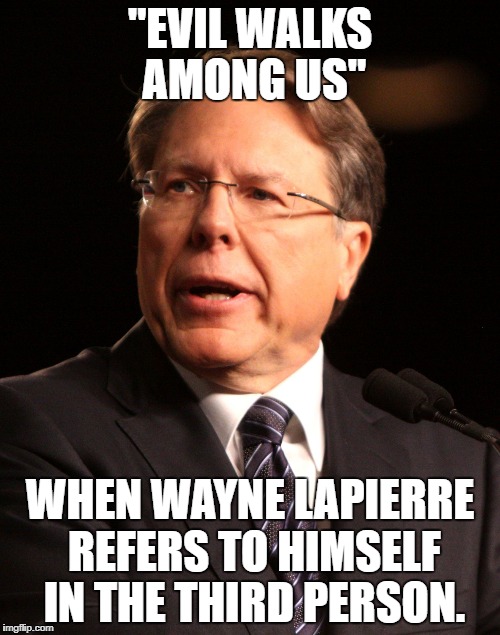
Few political groups in U.S. history have seen a collapse as swift and dramatic as the National Rifle Association.
Over the last several years, the NRA has experienced a public implosion, as the group loses members and revenue amid serious accusations of mismanagement and corruption. And according to the latest NRA tax returns obtained by The Daily Beast, the reputational and organizational damage is rolling on with seemingly no end in sight.
While the events contributing to the NRA’s freefall have been well-documented, a review of the gun rights group’s tax filings and political spending over the last 15 years provides some of the clearest evidence of its downfall—showing just how badly the legal setbacks and mismanagement have ravaged the once-formidable gun lobbying giant.
The NRA’s most recent tax return, filed in November of this year for 2022, reveals dramatic declines along almost every conceivable metric: revenue, assets, member dues, lobbying, and political spending—with conversely sharp increases in legal costs and deficits.
And as the NRA’s power and influence has waned, gun violence has perversely soared, particularly suicides, especially in the wake of the pandemic.
In one view, the NRA’s decline might be seen as a consequence of its own “success,” as its gargantuan lobbying efforts in the early to mid-2010s effectively froze the national gun control debate, diminishing the advocacy group’s utility. Still, that might be changing.
In 2022, 15 GOP senators repudiated the NRA, passing the first meaningful gun control package in decades. That could be a signal of the NRA’s demise, but it also could be interpreted as a reaction to the surging gun violence that continues to this day in part because of the lax gun laws that the NRA advocated for and won over that time.
What is clear is that the NRA today is in a dismal state. On the income side, 2022 was the fourth year in a row that revenue fell, marking its weakest fundraising year since at least 2008. Membership dues are at all-time lows, according to available public data, and staffing is at the lowest point since those costs began their downward plunge in 2016, while the group’s legal costs—largely driven by civil actions alleging rampant mismanagement of funds and self-dealing—are proportionately higher than ever.
The roughly $211 million that the NRA reported in income last year is still, of course, an enormous figure—more than double that of its handful of gun-rights competitors combined. But it’s also less than 60 percent of the NRA’s 2016 revenue high of $367 million.
That decline has driven the NRA deep into the red, leading to a $22 million deficit last year. That’s the group’s largest deficit since 2016, when it spent record sums during a vital election cycle, leaning on its high revenues and fat cash reserves as ballast for the spending binge. Today, however, the well is drying up.
The NRA’s net assets have plummeted. An internal audit obtained by watchdog group Citizens for Responsibility and Ethics in Washington shows that the group shed $36 million in value during 2022, going from $77.8 million in January to $41.8 million by year’s end.
And as a result, the NRA has been forced to tighten its belt while its influence wanes.
The group reported nearly $230 million in expenses last year, its second-lowest overall spending level since 2011, according to archived tax records. Only 2021 was lower.
One significant metric of decline is the group’s outside political spending, which has flagged since Donald Trump was elected. Total political outlays for the 2018, 2020, and 2022 cycles combined are at parity with what the NRA spent in the 2016 election alone, according to data compiled by the Center for Responsive Politics.
In the lobbying realm, the NRA shelled out big in 2021. That came directly on the heels of New York Attorney General Letitia James’ ongoing civil fraud suit, filed in August 2020, and while the organization was simultaneously attempting to declare bankruptcy and reorganize in Texas. (Texas courts ultimately rejected that reorganization as a bad-faith effort.)
But in the two years prior to 2021, lobbying expenditures had fallen dramatically, as they did again in 2022. The levels for the current year, 2023, are stacking up to potentially be the lowest since 2008, according to CRP data.
A number of factors have put downward pressure on the NRA’s finances.
One major contributor is the drop in dues, with member fees bringing in around $83 million in 2022—the lowest on record since at least 2008 and a nearly 59 percent drop from 2016, adjusted for inflation, according to an analysis this October from CREW. The NRA also saw its lowest income from contributions and grants income since 2011, despite an overall 35 percent increase in fundraising expenses—indicating that the group’s investments are yielding smaller returns.
With less money coming in, the nonprofit has been running up staggering legal fees from its ongoing civil disputes. Those include its court fights in New York, which involve millions of dollars in alleged self-dealing and mismanagement—including on behalf of the organization’s beleaguered CEO, Wayne LaPierre—as well as a battery of complaints filed with the Federal Election Commission alleging unlawful political coordination and shell company shenanigans.
The NRA has fought the New York lawsuit tooth and nail. The group went on the offensive with its own separate lawsuit against the state, which made its way to the Supreme Court this November. Last year, those efforts yielded a small victory when a New York court stopped that state’s AG, James, from dissolving the organization entirely, though she was allowed to pursue narrower damages and is actively doing so.
As a result, the NRA’s legal costs in 2022 were proportionately the highest they’ve ever been, with its $44 million in legal payments accounting for nearly 20 percent of expenses—roughly one of every five dollars spent. (In 2017, the NRA’s legal costs were 2 percent of expenses.) The group’s largest single vendor last year was its principal law firm, Brewer Attorneys and Counselors, which received about $23.5 million, or nearly 10 percent of the NRA’s 2022 budget.
In response to The Daily Beast’s comment request, NRA spokesperson Billy McLaughlin provided a statement arguing that the group’s legal defense costs are an investment, noting that the NRA is still head and shoulders above competing gun rights groups.
“As pundits and anti-Second Amendment crusaders continue to predict the demise of the NRA, the Association remains the largest and most effective advocacy organization of its kind, period. The NRA has invested heavily in its legal defense against the NYAG and, in March 2022, scored a major legal victory—when a New York court struck down attempts by the NYAG to dissolve the organization,” McLaughlin said.
“Beyond that, the NRA continues to score many legal and legislative victories, defending the Second Amendment and its patriotic members,” he continued. “As another example, the U.S. Supreme Court recently accepted the NRA’s First Amendment case against a former New York State financial regulator for review.
That decision is a landmark development in one of the most closely watched First Amendment cases in the nation. Only a few weeks ago, it was announced that the ACLU will join as counsel in that case.”
(The ACLU denounced the NRA in a statement to The New York Times explaining why it took the case, saying the civil liberties group doesn’t support the NRA or its mission. “We signed on as co-counsel because public officials shouldn’t be allowed to abuse the powers of the office to blacklist an organization just because they oppose an organization’s political views,” the ACLU said.)
Robert Maguire, a nonprofit analyst at CREW, told The Daily Beast that he hasn’t seen anything like the downfall the NRA has experienced.
“The NRA is the definition of an embattled organization,” Maguire said, referencing the array of legal and internal woes plaguing the organization. “2016 wasn’t that long ago, and at that time the NRA was, if not the most powerful organization in D.C., certainly one of them.”
“We have a lot of mass shootings in this country, and we used to have this discussion, this wait-and-see what the NRA is going to say,” Maguire continued. “But you don’t see them playing on the national stage the way they used to, and its repugnant statements after mass shootings are pretty much expected and just seem like an absurd afterthought.”
Maguire noted that “as an alternative or corollary to their implosion, they are a victim of their own success.”
The NRA eschewed its gun safety philosophy in the 1970s, transitioning into a trade organization to promote gun sales under the banner of the Second Amendment. That general shift—which former Chief Justice Warren Burger famously described as the “one of the greatest pieces of fraud, I repeat the word ‘fraud,’ on the American public”—was partly designed for profit, partly for electoral politics, and partly to normalize firearms ownership and thereby forestall legislative and judicial restrictions.
Those efforts have rendered gun control politically nonviable for years, even in the face of overwhelming popular support. And as political and judicial attitudes grew increasingly calcified, the NRA has become less necessary.
A few gun rights groups have tried to give the NRA a run for its money, but so far they haven’t gotten the same traction. A review of tax returns from the leading organizations—the National Shooting Sports Foundation, the Safari Club, and Gun Owners of America—reveals mixed trends in revenue. But in 2022, all three groups combined only pulled in about one-third of the NRA’s income.
Maguire noted that the NRA’s downfall tracks with increased gun ownership.
“Previously, we didn’t have this broad gun idolization culture, but in the ’90s you have Columbine, followed by mass shooting after mass shooting, and the NRA comes out every time to say, ‘You’re not going to take our guns away from me,’” Maguire said. “And every time, gun sales go up, so that today we have more guns than people in this country. We’re so saturated with them, who needs an organization to protect our guns?”
But gun deaths have also increased along with ownership, a darkly ironic trendline when contrasted with the gun lobby’s decline.
Firearms deaths peaked in 2021, with the Centers for Disease Control and Prevention recording nearly 49,000 fatalities—the majority of them suicides, which was a record high—and only a decrease of 700 deaths in 2022.
Unofficial data for 2023 from the Gun Violence Archive, which compiles information from law enforcement and government sources, shows 41,585 firearm-related deaths as of Dec. 20, with more than 56 percent being suicides. There’s also been a steady rise in mass shootings, which the FBI defines as involving four or more people—with Pew Research data revealing a long-running and increasingly dramatic rise in “active shooter” incidents.
However, 2022 also saw President Joe Biden signing the first meaningful federal gun control legislation in three decades, which passed the Senate with significant bipartisan support. As holes appear in the firearms lobby, gun control advocacy organizations like Everytown and Giffords are gaining traction.
This year, Everytown has led the lobbying charge among both gun rights and gun control groups, according to CRP data. And in 2022, Everytown and Giffords together raised about the same amount of money as the top three gun rights groups combined—not counting the NRA.
The post The NRA Is at Rock Bottom—And 15 Years of Tax Filings Tell the Story appeared first on The Daily Beast.
Hopefully soon a certain “Gentleman” named Wayne will find out if this is true. Grumpy

Florida Man
A report from New Jersey’s comptroller criticizes Street Cop Training for encouraging illegal traffic stops.
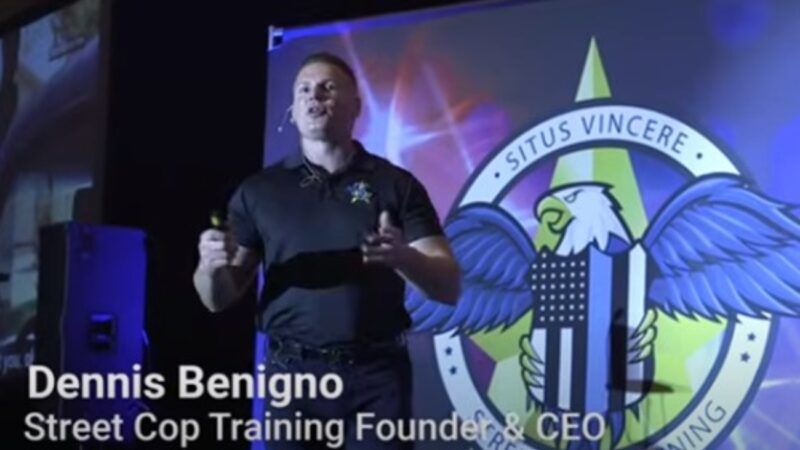
If a driver looks away while passing a police car, cops learn from a checklist promoted at an October 2021 conference in Atlantic City, that is suspicious. But if a driver stares at the police car, that is also suspicious. Hats work both ways too: Wearing one “low to cover [your] face” is suspicious, but so is removing a hat when you are stopped by the police. Other telltale signs of criminal activity, according to Street Cop Training’s list of “reasonable suspicion factors,” include texting, smoking, lip licking, yawning, stretching, talking to a passenger while keeping your eyes on the road, signaling a turn early or late, maintaining “awkward closeness” or “awkward distance” during a stop, standing parallel or perpendicular to the car, saying you are heading to work or heading home, questioning the reason for the stop, and refusing permission for a search.
That Street Cop Training checklist, which offers handy excuses for officers keen to conduct searches for drugs or seizable cash, figures prominently in a recent report from Kevin Walsh, New Jersey’s acting comptroller. The report criticizes the New Jersey company for encouraging officers to make or extend stops without reasonable suspicion and for promoting a “warrior” mentality that fosters the excessive use of force. “We found so many examples of so many instructors promoting views and tactics that were wildly inappropriate, offensive, discriminatory, harassing, and, in some cases, likely illegal,” Walsh said when he released the report this week. “The fact that the training undermined nearly a decade of police reforms—and New Jersey dollars paid for it—is outrageous.”
Street Cop Training was founded in 2012 by Dennis Benigno, who was a Woodbridge, New Jersey, police officer until 2015. Each year the company, which Benigno describes as “one of the largest, if not the largest, police training providers in the United States,” trains about 25,000 officers from agencies across the country. The six-day Atlantic City seminar that Walsh describes in his report attracted nearly 1,000 officers, including 240 from New Jersey. Their employers covered the expenses, which included a $499 fee for each officer, travel and lodging, and paid time off.
What did taxpayers get for their money? Potentially, Walsh argues, greater exposure to more expenses down the road, including millions of dollars spent to litigate and settle civil rights lawsuits. “This kind of training comes at too high a price for New Jersey residents,” Walsh’s report says. “The costs of attendance for training like this is small in comparison to the potential liability for lawsuits involving excessive force, unlawful searches and seizures, and harassment and discrimination.”
While “some of the observations and reasoning” described in Street Cop’s checklist “find support in case law,” Walsh says, “others appear to be arbitrary and contradictory.” Officers who follow Benigno’s advice therefore may end up violating the Fourth Amendment by making or prolonging stops based on factors that fall short of reasonable suspicion. If so, any resulting searches also would be unconstitutional, making any evidence they discover inadmissible.
Beyond the checklist, Benigno suggested during presentations at the conference that a driver’s refusal to allow a search can support reasonable suspicion or probable cause. For example, he showed “a montage of people refusing consent in an attempt to illustrate that a motorist’s refusal to consent is a suspicious factor that justifies further prolonging an investigative detention.” If you have nothing to hide, in other words, why wouldn’t you let a cop paw through your possessions on the side of the road? Surely the inconvenience, indignity, and public embarrassment are a small price to pay for helping the police protect the public.
That reasoning is legally as well as logically dubious. In New Jersey, Walsh notes, “it has been long settled that the police must have reasonable suspicion of criminality before they ask for consent to search a motor vehicle.” And “even outside of New Jersey, many courts have found that a ‘refusal to consent to a search cannot itself form the basis for reasonable suspicion.'”
One Street Cop instructor, Hobart, Indiana, police Sgt. Kenny Williams, seems to make a practice of stopping motorists without reasonable suspicion. In Indiana, Williams noted, the speed limit for trucks is 65 miles per hour, while the speed limit for cars is 70. “There is no fucking way that any car should ever be behind a semi if they have the ability to pass it,” Williams said. “When you do that,” he explained, “if you are coming through Indiana, I am going to fucking stop your ass.”
Another speaker at the conference, Boston police officer Tommy Brooks, suggested pulling over “20 people in a row for the sole purpose of asking them a series of questions,” such as where they are coming from and where they are going. That experiment, Brooks said, would establish a “general baseline” of “how people answer questions,” which the officer could later use to identify “weird” responses from other drivers. Helpful or not, the research project that Brooks recommended would be blatantly unconstitutional. “Without an objectively reasonable basis for the stop,” Walsh notes, “those stops, as described, would violate the Fourth Amendment prohibition on unreasonable seizures.”
Even when a driver is legally pulled over for a traffic violation, the encounter is supposed to last no longer than is necessary to complete the purpose of the stop unless the officer has enough evidence to support reasonable suspicion of other illegal conduct. At the Street Cop conference, Brad Gilmore, a narcotics detective with the Bergen County Prosecutor’s Office, suggested a way around that constraint: “finger-fucking” your computer or “playing Tetris.” In other words, Walsh says, Gilmore “endorsed a practice of pretending to conduct a computer lookup so an officer can illegally but surreptitiously continue an investigation during a motor vehicle stop that should have already concluded.”
Another trick suggested by “multiple instructors,” Walsh says, involves returning at least one of the driver’s documents (such as his license or his insurance card) and/or assuring him that the stop will end with a warning rather than a ticket. While those techniques might make a driver more patient or more cooperative, Walsh notes, they cannot legitimize “a stop that has been illegally prolonged.”
The report also faults Street Cop for encouraging “a hyper-vigilant ‘warrior’ mentality” that views “every interaction with a civilian” as “a potential deadly threat.” Benigno, for example, told the cops at the conference they should always keep in mind that their work could “take your fucking life in a second” and to “treat every motor vehicle stop as if you are going to die and you might just live.” Throughout the conference, Walsh says, speakers “made comments glorifying violence and the application of military techniques to policing.”
In September, while Walsh was conducting his investigation, the New Jersey State Police told its employees they should stop taking Street Cop courses. There was more apparent fallout on Thursday, when New Jersey prosecutors abruptly dropped drug charges against Francisco A. Paulino-Edua, who was arrested in 2017 by Gilmore, one of the Street Cop instructors. In addition to criticizing Gilmore for endorsing illegally extended traffic stops, Walsh describes him as encouraging insubordination and making light of internal affairs investigations.
“This officer’s believability and credibility were so suspect that the government could not back up a prosecution based on his behavior,” Paulino-Edua’s lawyer, Brian Neary, told The New York Times. Neary predicted that Walsh’s investigation is “going to open up a floodgate” as other cases come into question because of the policing tactics that Street Cop promotes.
Situation: Over a span of years, a lawman is forced to fire at three violent, armed criminals.
Lesson: Action beats reaction, so you must be committed to reacting immediately. The more intelligence you can gather before a confrontation, the better. And sometimes, the way your department treats you can be more traumatic than the incident itself.
I met Richard Rippy when I was an expert witness working for the defense in the United States v. Richard Palmer case. It was a Federal criminal case against a Lake County, Fla., sheriff’s deputy charged in a furtive movement shooting. Rippy had been the accused officer’s firearms and deadly force instructor. His input had been pivotal in allowing a defense team led by Attorneys Alan Diamond and Kepler Funk to win a total acquittal. Rippy had helped us to establish that in a dangerous incident in the darkness, Palmer had done what he had been trained to do, and what he had been trained was in keeping with best practices.
In the course of preparing for the case, I learned Rippy himself had been involved in three fatal line-of-duty shootings during his own 32 years of service, first as a municipal police officer with the City of Eustis, Fla., from which he retired as a sergeant and then with the Lake County, Fla. Sheriff’s Office, retiring for good with the rank of lieutenant in 2019. I suspected his experiences would impart valuable lessons to our readers. That turned out to be the correct assessment.
Background
As a young U.S. Marine, Rippy had gone through Primary Marksmanship Instructor School. When he left the USMC to enter domestic law enforcement in 1987, he joined the 25-man police department of the City of Eustis in Lake County, Fla. It was policy that an officer had to serve on the job for years before being considered as an instructor, but his USMC background earned him a waiver, and he was soon a police firearms instructor, taking every advanced course he could find.
He started out with the department issue service revolver, S&W’s Model 19 .357 Combat Magnum. In 1991 Eustis PD joined the rest of the nation in the switch to the semi-automatic service pistol, and he was issued a 16-shot .40 caliber GLOCK 22. Shortly after that transition, the GLOCK would be used in his first officer-involved shooting.
Madman With A Knife
December 23, 1991, 7:47 p.m. Rippy is one of several officers dispatched to a call at an apartment complex. A citizen has reported an emotionally disturbed person has been shaking people down in the hallways with a large knife. Lt. Mike Whittaker, the watch commander, leads Rippy and Officers Joel Tart and Jeff Breedlove to the top of the stairs in time to see the suspect running toward them.
The man ducks into an apartment, from which the legitimate resident emerges on crutches moments later, shouting, “He’s got a knife!”
Hoping he can reason with the suspect, the lieutenant leads from the front as the officers make entry, single file, with Rippy second in line behind the lieutenant. Passing through a narrow hallway into the living room, Breedlove flanks to the left behind their leader and Rippy to the right.
And suddenly, the knife-wielder is coming toward them. Rippy, thoroughly familiar with Dennis Tueller’s research proving the average adult male can close seven yards with a knife in a second and a half, instantly realizes the maniac is way too close to the lieutenant, who attempts to backpedal to create distance. But the lieutenant’s rearward path is blocked by a coffee table, and he loses his balance, and the six-foot, 200-lb. assailant is barely more than a step away from him, lunging with the big knife upraised in an icepick hold.
The room erupts into gunfire.
Rippy’s GLOCK is in a two-handed Weaver stance, and he is looking over the top of the pistol, not trying to aim, as he unleashes four rapid shots. Breedlove is firing also. The knifeman collapses before he can reach the lieutenant.
The officers secure the blood-soaked would-be cop killer and attempt first aid, but it proves useless. Rippy’s 165-grain jacketed hollow points have hit “center mass,” and a bullet from Breedlove’s G22 has destroyed the thumb of the knife hand. The deceased, John Lemberg, turns out to have no criminal record but a long history of serious mental health issues.
It was over for Lemberg but not for Rippy. He would remember later, “We didn’t have a lot of officer-involved shootings back then, and the department didn’t have a protocol in place. We were placed on administrative leave. FDLE (Florida Department of Law Enforcement) investigated the shooting and we were cleared by them and even by the Grand Jury. During that time, they sent us for psychological evaluations. They told me I had failed without telling me why and the department didn’t seem to know what to do. Finally, they sent me for a second psych eval, and I was told I had passed. I was finally back at work after being out on leave for two months and never having been told why I hadn’t passed the first evaluation.”
Murderer With A 9mm
March 11, 1996, 5:11 a.m. It has been a busy few shifts in Eustis and surrounding areas. There have been too many BOLOs (Be On the Lookout) alerts for all the officers to read, but Rippy has learned that earlier in the night, another officer had taken a burglary report that sounded more like a drug rip-off. Later the department received an anonymous tip that the suspect was at the Caramar Hotel in Eustis. Rippy is one of the officers who responds.
The plan is a “knock and talk.” When the hotel room door opens, Rippy is surprised to see not a stereotyped “drug thug” but a well-groomed black man about 5’10” and 170 lbs. wearing a suit and tie. The cop’s first impression is “preacher or businessman” and he wonders if the tip was bogus.
He does not know he is face to face with Derrek Williams, who has come to the city to do a burglary and rob people of drugs. Moreover, Williams has done a carjacking in nearby Lakeland in which he has shot and killed an elderly man and woman and has shot and wounded another victim in a drug transaction not far away in Leesburg.
And Williams is carrying a loaded S&W 5906 9mm under his impeccable suit.
Out of habit, Rippy politely asks Williams if he could put his hands on the dresser so the officer can pat him down. The unexpected response is, “I’ve been doing drugs tonight.” Rippy responds placatingly, “I’m not concerned about that.” A seemingly compliant Williams places his hands on the dresser as told.
As Rippy’s hands go to Williams’ waistband, so, suddenly, do the suspect’s own hands. And the killer explodes into movement, spinning to his right, away from Rippy — and coming up with the silver-colored semiautomatic. The muzzle of the S&W is at Rippy’s forehead in an instant. He is staring down the barrel. And he sees Williams’ finger pull the trigger.
There is no shot. Rippy explodes into defensive action, shoving Williams away from him and reaching for his own pistol. Williams turns and runs toward the bathroom. Rippy follows his GLOCK up now, firing. The gunman disappears into the bathroom.
Rippy hears the “tap-rack” sound of his deadly opponent manipulating his pistol and then a single muffled gunshot and a thud.
It is over almost as quickly as it began. Derrek Williams has shot himself in the head. His death was instantaneous.
Reconstruction would show the would-be cop killer had apparently been nervously manipulating his pistol earlier in the evening, taking the loaded magazine in and out of the 9mm. The Model 5906, like all commercially sold third-generation S&W auto pistols, had a magazine disconnector safety that would not allow the chambered round to fire unless the magazine was fully seated. When Williams pulled the trigger on Rippy, the magazine had not been locked into place. That saved Rippy’s life.
Rippy was shocked to discover none of his bullets hit the offender. He fired while both men were running. He had not tried to use his sights because he hadn’t thought there was time.
Once again, the investigation showed the officer had acted properly, but the department’s psych eval came back saying Rippy had failed. He would tell American Handgunner years later, “They never told me why I had failed. I was asking myself, ‘Do they have some preconception of what I’m supposed to say, and I’m not saying it? Do they think I’m being too matter-of-fact about it?’ I did what I had to do, and I told them so. I had a conversation with the department, was told I was cleared to come back to work, and that was that.”
Abuser With A .45
Rippy had transferred from Eustis PD to the Lake County Sheriff’s Office, a larger agency headquartered in Tavares, Fla., employing more than 500 sworn personnel. LCSO issued the same service pistol, the G22, but with 180-grain jacketed hollow point .40 S&W ammunition.
August 26, 2011, 5:01 p.m. William Hall, a ruggedly built blond-haired white guy weighing about 185 lbs., has barely been out of prison after serving a drug-related sentence when his wife calls in a domestic abuse complaint. Rippy and other deputies determine Hall has gone to a neighbor’s house.
As they approach the dwelling, Hall unexpectedly emerges. Rippy can see the man is holding a 1911 pistol to his own head as he approaches the deputies. Rippy draws his GLOCK and yells at him repeatedly to drop the gun.
The distance closes quickly. Rippy shouts a final command to drop the gun.
Instead, Hall swings the pistol down and points it at Rippy.
The lawman fires first. Two-handed, point shoulder rather than aim, indexed on center mass. The bullets strike the center torso, and Hall falls heavily to his side, down before he can trigger what turns out to be a Springfield .45. Hall will not survive.
It is over, just that quickly. More than a decade after this, his last shooting, the retired lieutenant will tell American Handgunner, “I’m sure it was a suicide by cop. I couldn’t let him get any closer. We were five to seven yards apart when I shot him. The Sheriff’s Office had a better protocol than the city did when I worked there. FDLE conducted the investigation, and it was also cleared by the State’s Attorney’s Office. This time, there was no psych eval, though LCSO encouraged us to seek psychological counseling if we wanted it.”
Lessons
Most law enforcement officers will go their careers without having to fire their duty weapons at anyone. But obviously, most is not all. When we outsiders analyze these cases, we learn a lot. One thing we learn is that the involved officer himself is a priceless resource for lessons because no one will have thought about it so much as the individual who lived through it. Given his extensive training and experience as an instructor, Rick Rippy is positioned to provide particularly valuable insights into the three fatal shootings he personally experienced.
Proximity can be deadly. In each of these three shootings, a call for service brought Rippy and his brother officers to the scene, and in each case, the perpetrator’s actions “closed the gap.” Action beats reaction. The offender gets to be the actor and forces you to be the reactor. The closer he gets, the less time you have in which to react. This means you must be committed beforehand to look for and react appropriately to deadly stimuli — if this, then that! In each case, Rippy’s ability to do so saved his own life and the lives of other officers present. It is a lesson he has emphasized to the many officers he trained throughout his long career.
Those who may face homicidal criminals need to be familiar with the physio-psychological aspects of violent encounters. In every one of his shootings, Rippy experienced tachypsychia, the sense of things happening in slow motion. The word translates to “the speed of the mind.” As our brain goes into a hyper-speed survival mode, processing input much faster than usual, it creates that sense of slow motion. Says Rippy, “I always felt things slow down. I felt anxiety going into the call; then, in all three of them, it was like slow-motion movies. In all of them, though, it was a matter of two to four seconds.” Having been trained that this might happen, Instructor Rippy was not distracted when it did, and he stayed focused on what he needed to do to solve the lethal problems he was facing.
“You can’t read enough; you can’t train enough. Don’t take it for granted that you’re going to go home,” Rippy wants you to know. “If you don’t educate yourself on current trends, you’re making a mistake.”
Gather as much intelligence as possible beforehand about the situation you may be entering. Says Rippy, “After the Williams incident, in particular, I kicked myself for not having found the time to read the BOLOs. It would have given me warning that we might be going up against a multiple murderer, not just a burglary suspect.”
Train for worst-case shooting problems. Note that when he stood in place and delivered fire, Rippy had a high hit ratio and quickly stopped the fights, but when he had to run while shooting at a running man, he missed. It’s harder to hit a moving target than a standing one. It’s harder to hit a standing target when you are moving than when you are standing still. When you and the target are both moving, as in the Williams shooting, the marksmanship element becomes exponentially more difficult, even for expert shooters like Rippy.
Prepare for post-traumatic issues. Post-event symptoms such as insomnia due to adrenaline dump are virtually universal. Remember so-called “post-shooting trauma” is less a reaction to your having to shoot a criminal than it is your reaction to how your world has treated you for doing it. Rippy told me, “After the first one, I had insomnia bad. A lot of that was the anxiety of not knowing what the department was going to do. It’s not normal if you don’t replay it in your head. It helps train you for a future situation. Taking a life is not exactly a normal thing.”
Consideration must be given to the person who was forced to shoot. The failure of not one but two psychologists to tell the involved officer why he “flunked the psych test” is almost unforgivable. Such evaluations must be objective, not subjective; those doing the evaluations must be cross-trained by such organizations as the Force Science Institute to understand the unique ramifications of having been forced to kill in defense of self and other innocent parties.
Consider legal aftermaths. Rippy’s last two shootings were so obviously justifiable neither criminal nor civil liability evolved. In the first shooting, the estate of the deceased sued the department, resulting in a “chump change settlement” of $35,000, but at least the City of Eustis explained to Rippy they settled because it was cheaper than going to trial and winning. This was cold comfort to the involved officer, who understandably thought the settlement was a slap in his face.
And one more often-overlooked consideration. When Rick Rippy retired, he had severe hearing loss. While some might associate this with a lifetime of being a firearms instructor, Rick feels at least part of it was having had to fire a gun repeatedly in close quarters without hearing protection in the line of duty. He notes, “They give us all kinds of documented physical evaluations when we come on ‘The Job,’ but not usually a hearing test. Thus, the officer has no baseline to show how much hearing he or she lost in the line of duty.”
Let us close by thanking retired Lieutenant Richard Rippy for his many years of service and for the insights he has shared with American Handgunner’s readers.
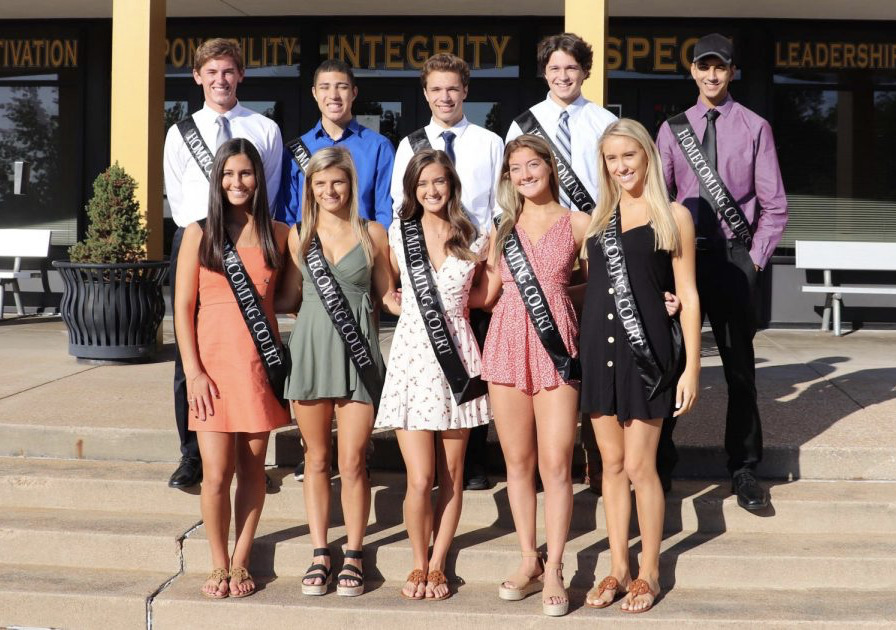
I know this is hard to believe, but I wasn’t necessarily the most popular kid in High School. I ran track briefly just to check the block for military pursuits that were to come later, but a jock I was definitely not. I was kind of a cerebral kid who got along with everybody. However, there was never any real threat that I might win Most Handsome or be nominated to escort the Homecoming Queen.
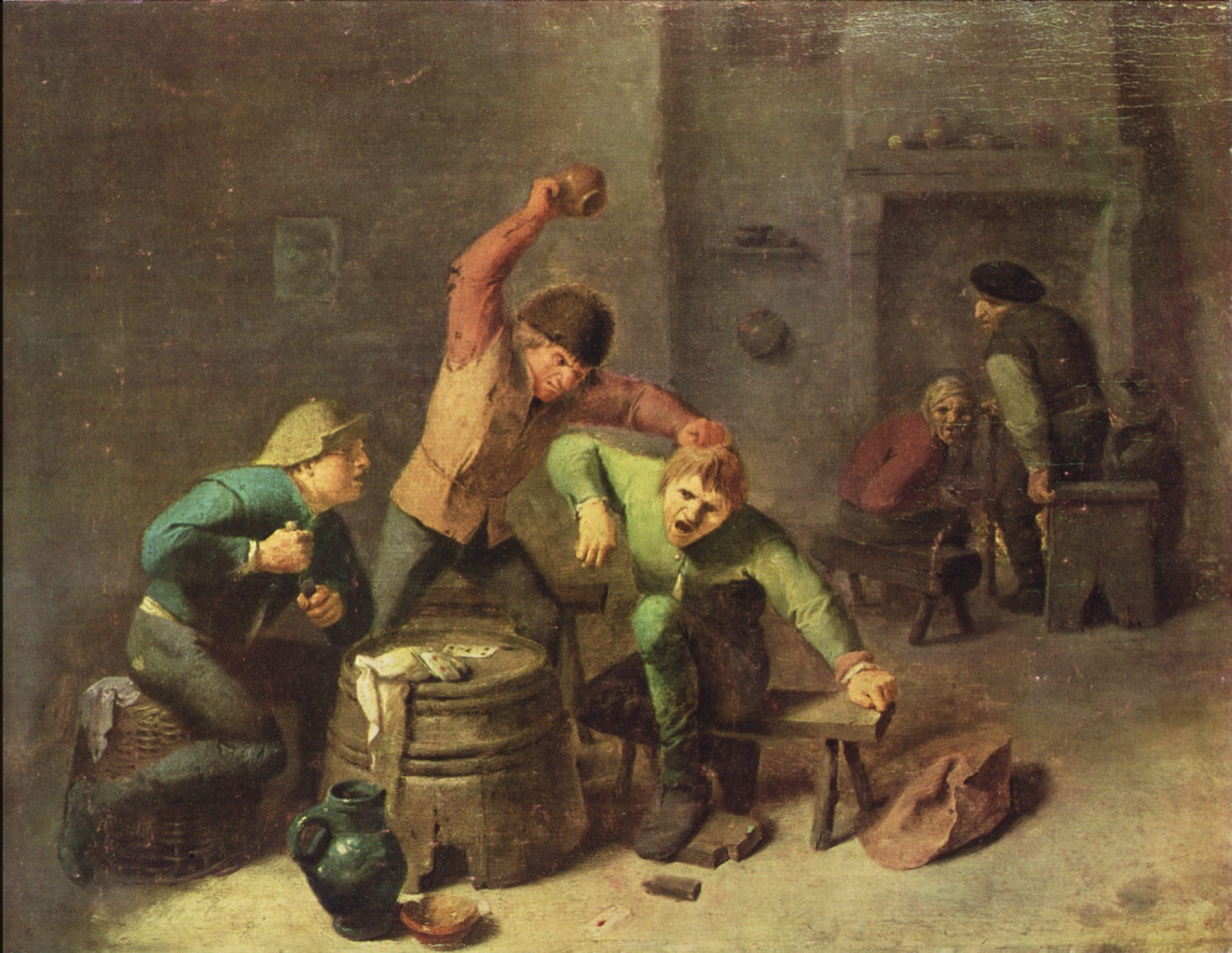
Throughout it all, I was pretty comfortable in my own skin. School violence back in my day was restricted to two rednecks fighting with their fists over something stupid and soon forgotten. Kids brought guns to school all the time, but we left them locked in the trunks of our cars for hunting and shooting excursions afterward. In the days before the Internet, nobody really thought to take things any further.

At some point between then and now something fundamentally changed. The World Wide Web connected folks with weird proclivities in ways we never might have imagined. According to the Guinness Book of World Records, a Florida man named George Frandsen has the largest collection of privately-owned fossilized turds in the world. As of 2016, this 36-year-old owned some 1,277 samples of coprolite or fossilized excrement. He even operates an online Poozeum to show off his crap. You can find it here.

Before the Internet, George Frandsen just would have been some harmless guy with a curiously strange hobby. Now this deep into the Information Age, however, Mr. Frandsen can connect with like-minded poo collectors from all over the world. While collecting fossilized turds is, in reality, indeed fairly harmless, the Net takes some other people to much darker places.

Nothing brings out your inner victim like connecting with like-minded lost souls. The dark subject of our discussion today is Scott Beierle. Scott self-identified as an Incel, or part of the Involuntary Celibate community. Distilled to its essence these are most typically hetero males who define themselves as being unable to obtain or maintain a romantic partner despite wishing they could. Theirs is a curious online subculture frequently characterized by self-pity, self-loathing, and a sense of entitlement to sex. Such stuff can also cross a little invisible line to become quite terribly dangerous.
The Guy
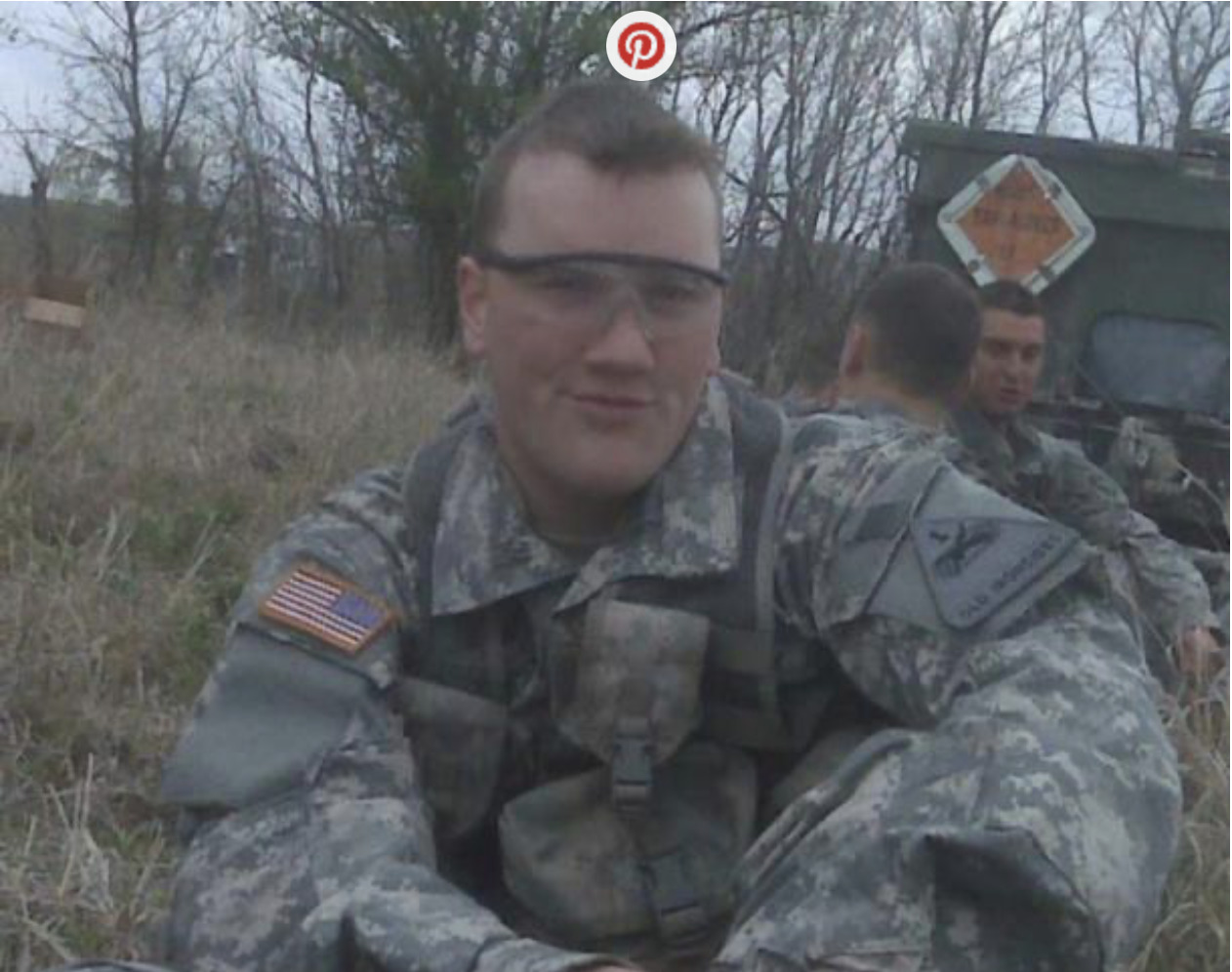
Scott Paul Beierle was born in October of 1978. According to his Facebook profile, he was a military veteran, but I couldn’t find many details about his service. After leaving the military he taught Social Studies and English in the Anne Arundel County Public School System. He also served as a substitute teacher at surrounding schools but was oft disciplined for performance problems.

In one case, Beierle was fired from a substitute position for touching a female student on her abdomen and asking if she was ticklish. In 2012 and 2016 he was officially charged with battery for groping women’s buttocks. Over time this disturbed young man came to view all women as the impetus behind his many manifest problems. His online activity reinforced this twisted vision.
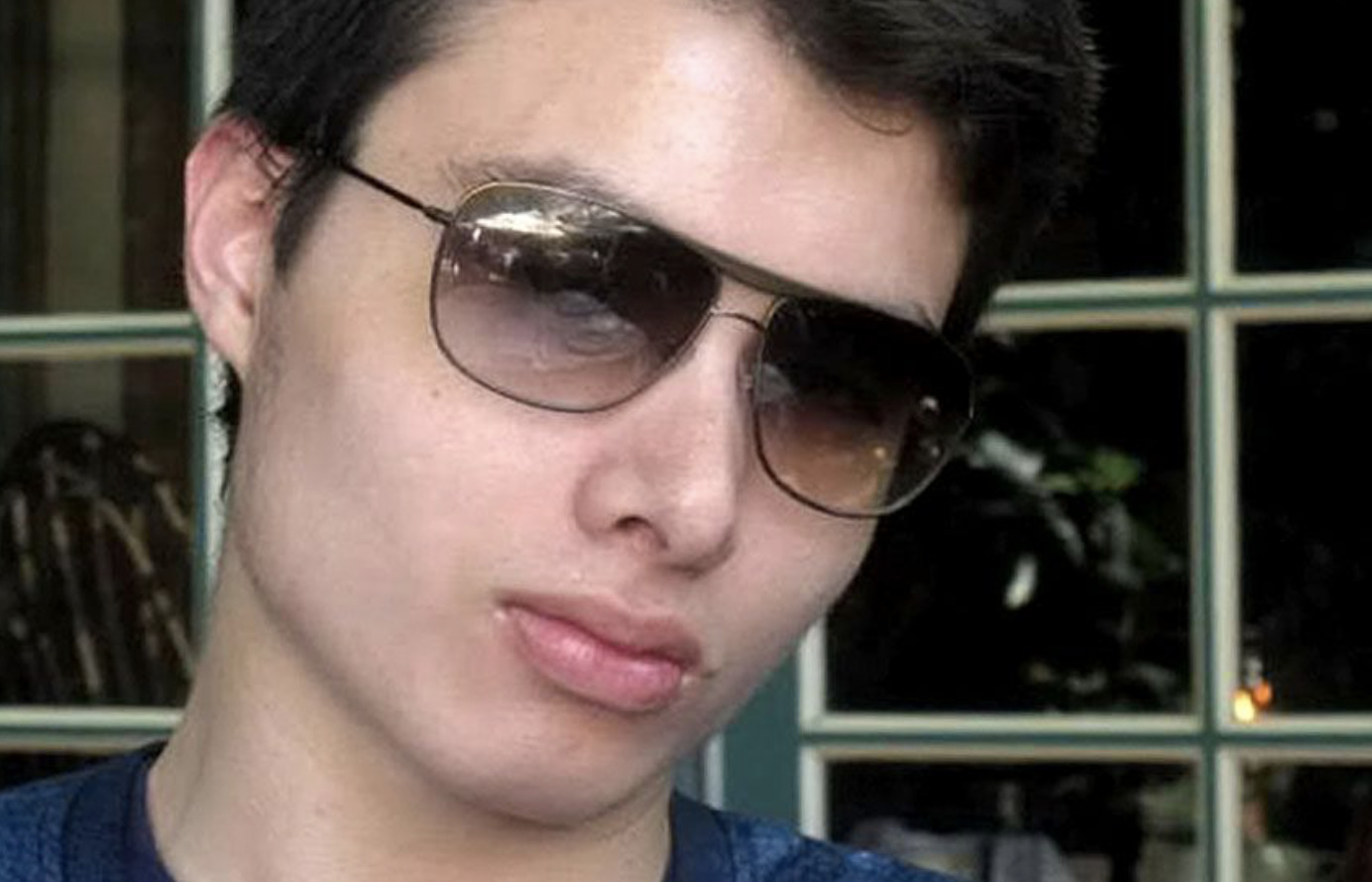
Beierle was active on social media. He posted several YouTube videos that allowed him to vent over his sordid state. In one 2014 video, he described himself as an Incel and voiced support and empathy for Elliot Rodger, a mass shooter who also projected his personal shortcomings onto women in general. Rodger ultimately killed seven people and injured another fourteen. This twisted guy posted an online screed just before his attack titled, “Elliot Rodger’s Retribution” wherein he verbalized his hatred towards women for rejecting him and sexually active men because he envied them.
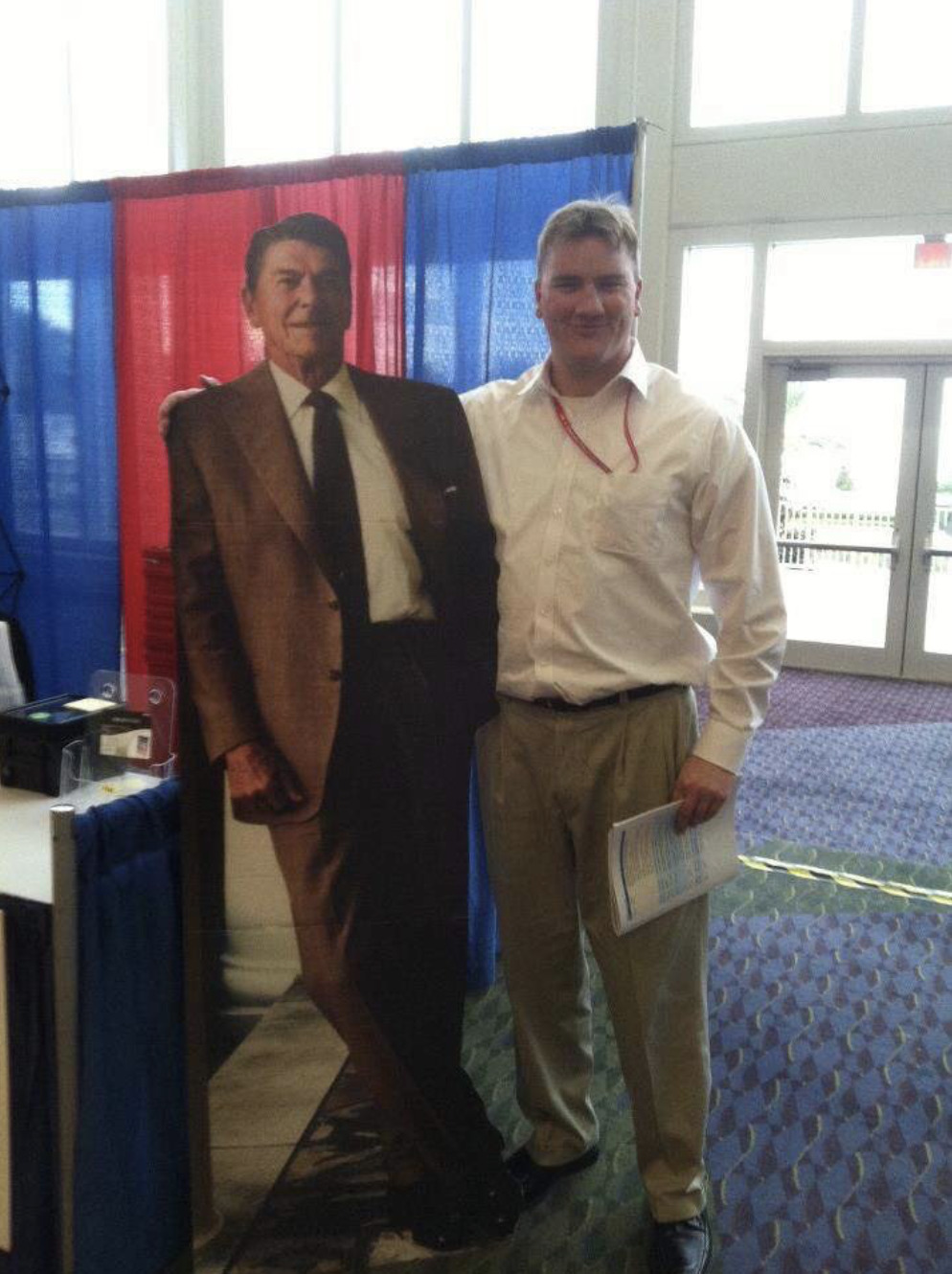
Beierle also hated African-Americans and got seriously tooled up over interracial relationships. Illegal immigration set him off as well. He wrote song lyrics that glorified the torture and murder of women. He titled one of his videos, “Dangerous Diversity.”
It Has a Name
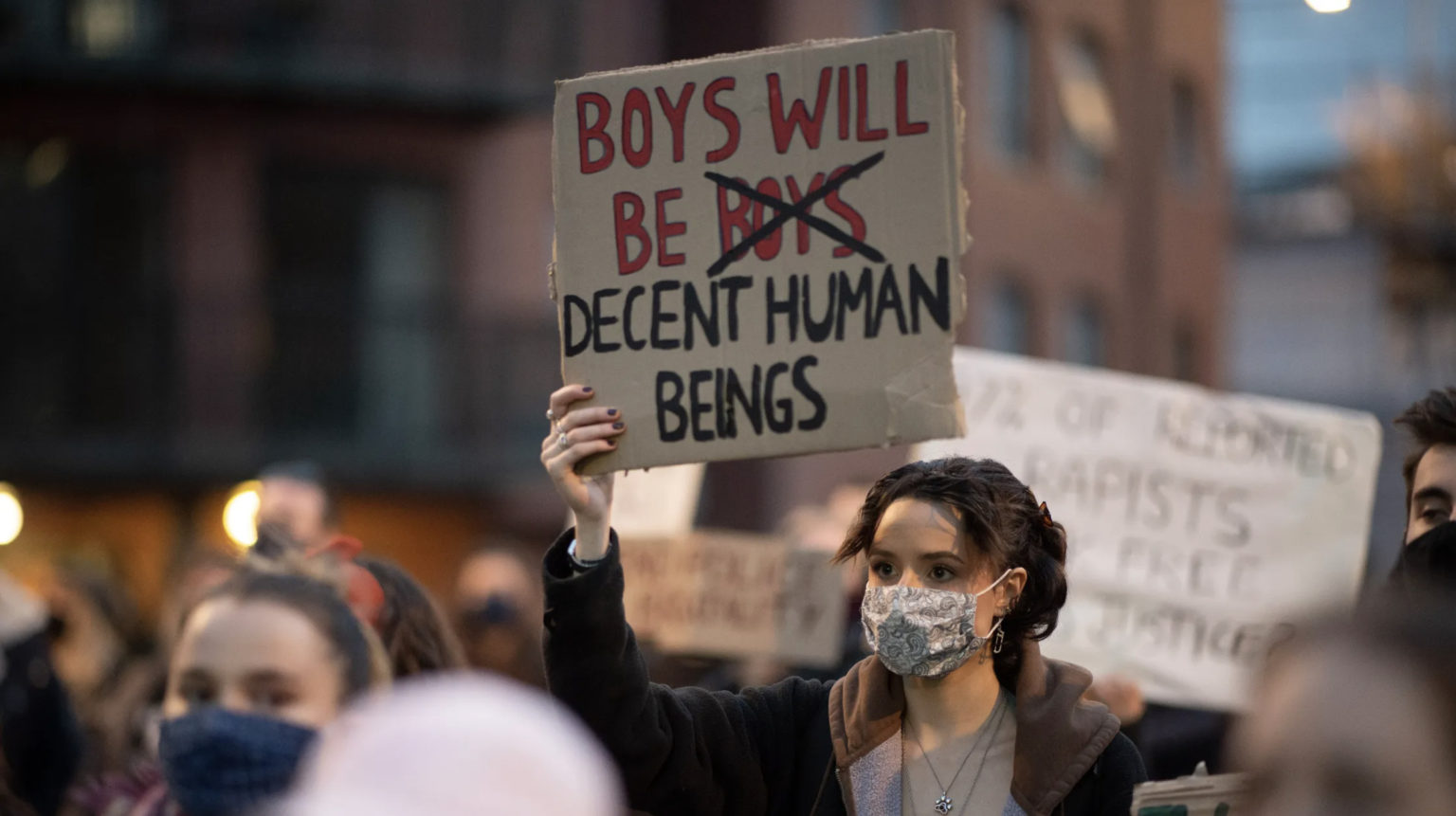
The textbook definition of a misogynist is, “A person who dislikes, despises, or is strongly prejudiced against women.” Not unlike woke or gaslighting, this is one of those obscure terms that no one really paid much attention to until lately. Scott Beierle took it yet further and earned the title “Misogynistic Terrorist” from the ICCT.

ICCT stands for International Centre for Counter-Terrorism. It was founded in 2010 and is based in The Hague. Per Wikipedia, “The ICCT is an independent think tank devoted to providing multidisciplinary policy advice and practical support focused on prevention and the rule of law as it relates to combatting terrorism. ICCT’s work focuses on themes at the intersection of countering violent extremism and criminal justice sector responses, as well as human rights-related aspects of counter-terrorism. The major project areas concern countering violent extremism, rule of law, foreign fighters, country and regional analysis, rehabilitation, civil society engagement, and victims’ voices.” I have no idea what all that really means, but the ICCT really doesn’t like people like Scott Beierle.
The Event
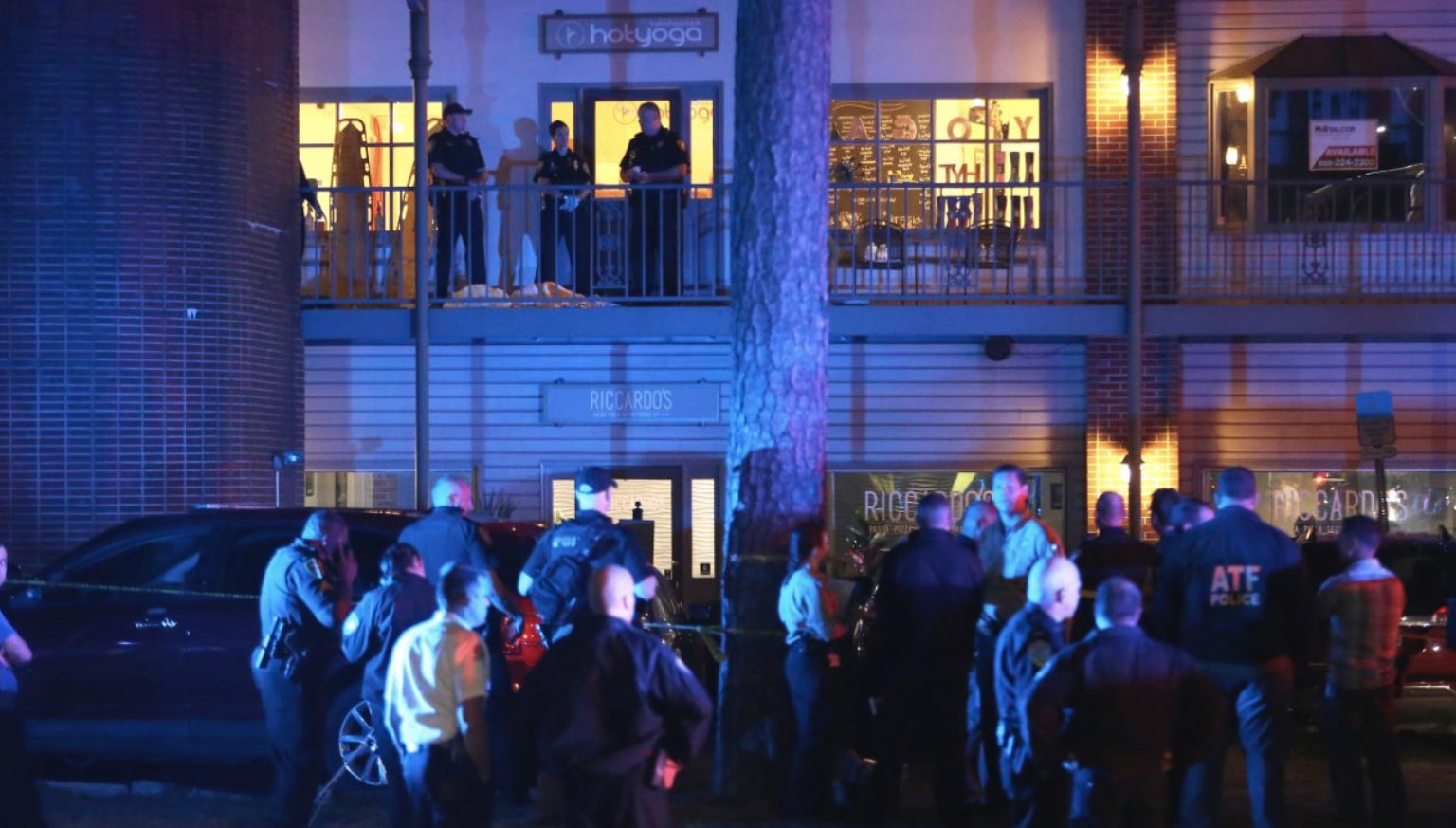
November 2, 2018, was a Friday. At 5:37 PM, Scott Beierle walked into Tallahassee Hot Yoga carrying a 9mm Glock 17 handgun. For those of you who, like me, might not get out much, hot yoga is apparently the act of performing yoga in an artificially torrid environment.
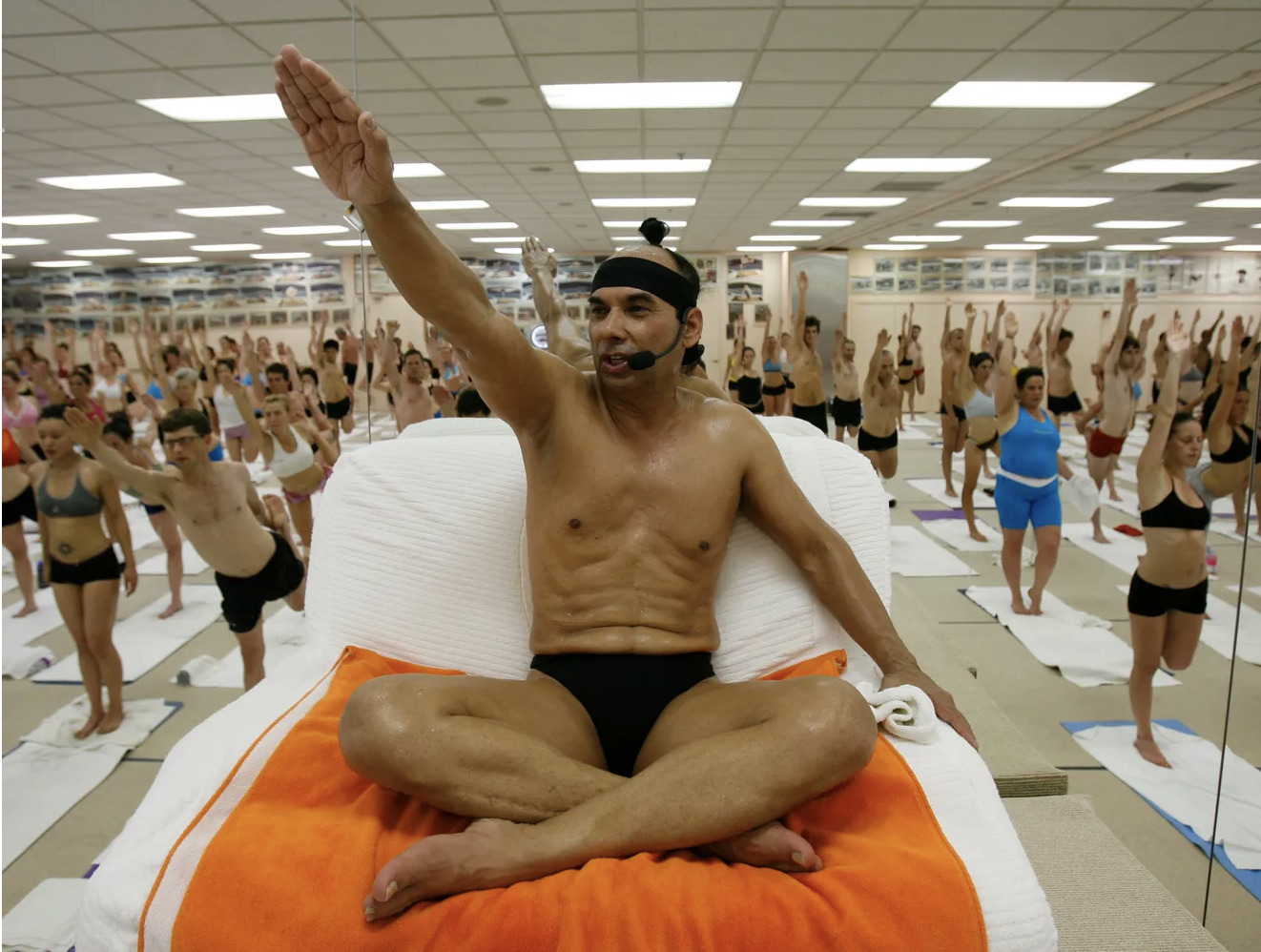
Hot yoga began with someone named Bikram Choudhury. The mission is to replicate the heat and humidity of India, where yoga first was born. The goal is to sweat a lot and, in so doing, “prepare the body for movement and remove impurities.” Whatever. That all sounds pretty miserable to me. However, it does reliably attract women.

After dissecting his digital footprint in retrospect, investigators found that Beierle had been planning his attack for months. He briefly masqueraded as a yoga student before opening fire on the folks in the studio. A lot of stuff happened fairly quickly at that point.
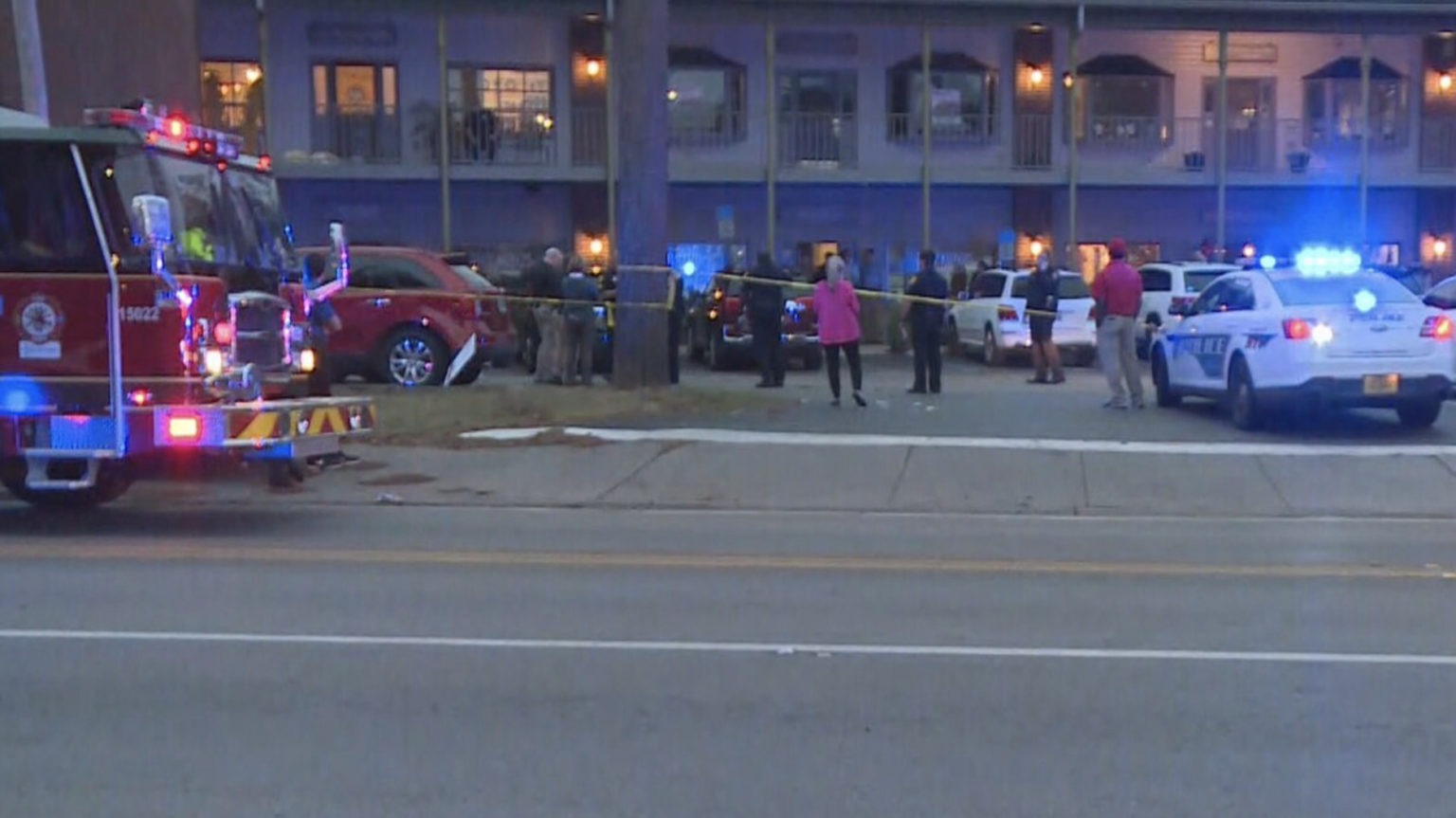
Patrons in a bar across the street reported people streaming from the yoga studio. A man in a badly-bloodied white t-shirt then ran into the bar and claimed that he had attacked the shooter in an effort to buy time for the other patrons to escape. Other survivors backed up his claim.


Beierle ultimately shot six people, killing two. The dead victims were a 21-year-old student at nearby Florida State University named Maura Binkley and a 61-year-old physician named Nancy Van Vessem. Binkley was due to graduate the following year. Dr. Van Vessum worked as the Medical Director for a health insurance company.
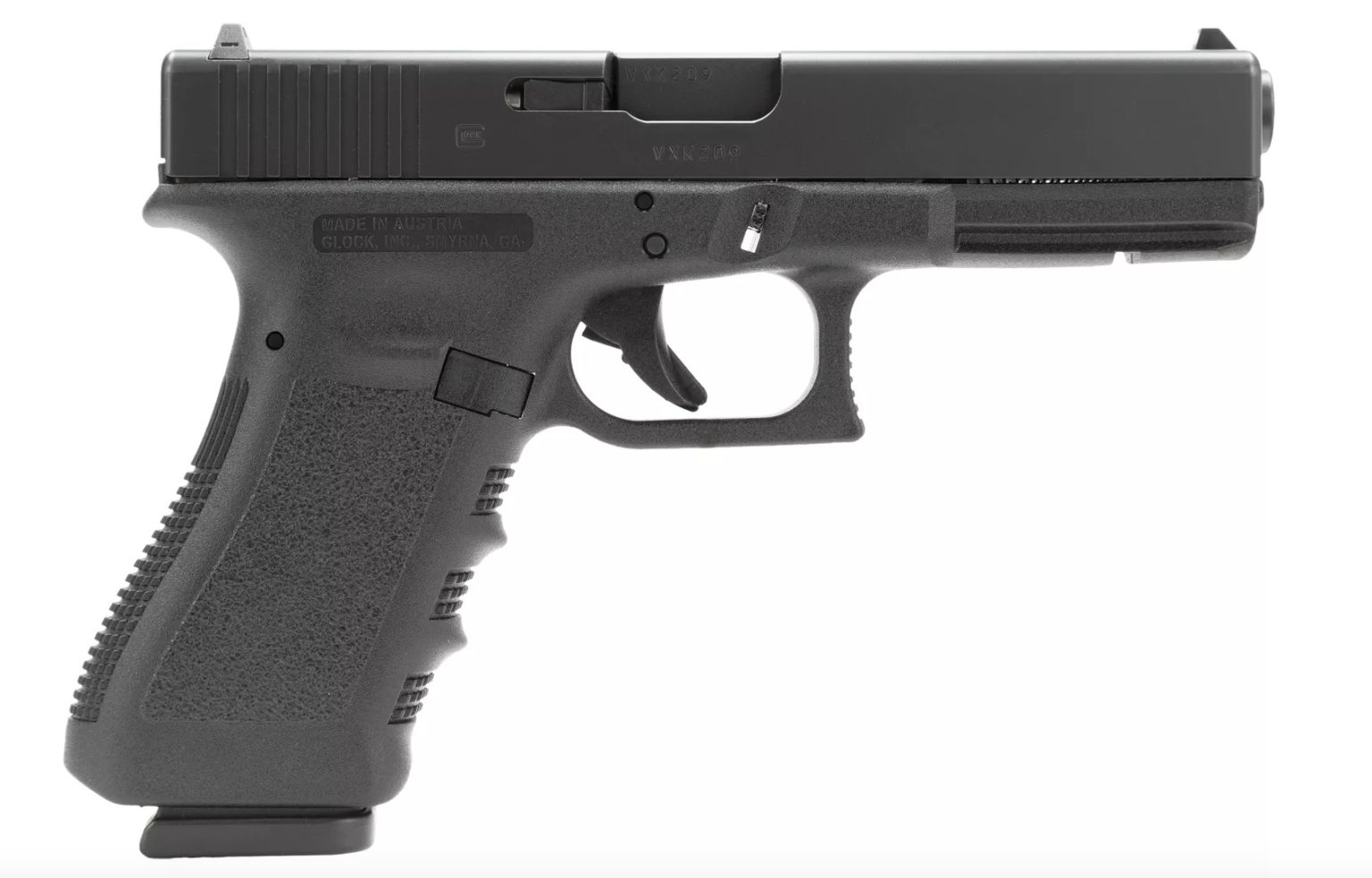
The man who resisted Beierle’s attack fought back with whatever he had handy. At first, this was a vacuum cleaner and later a broomstick. Though he wasn’t shot, Beierle did beat him severely with his handgun. Tallahassee Police Chief Michael DeLeo later applauded the students who, “fought back and tried not only to save themselves but other people.”
The Aftermath
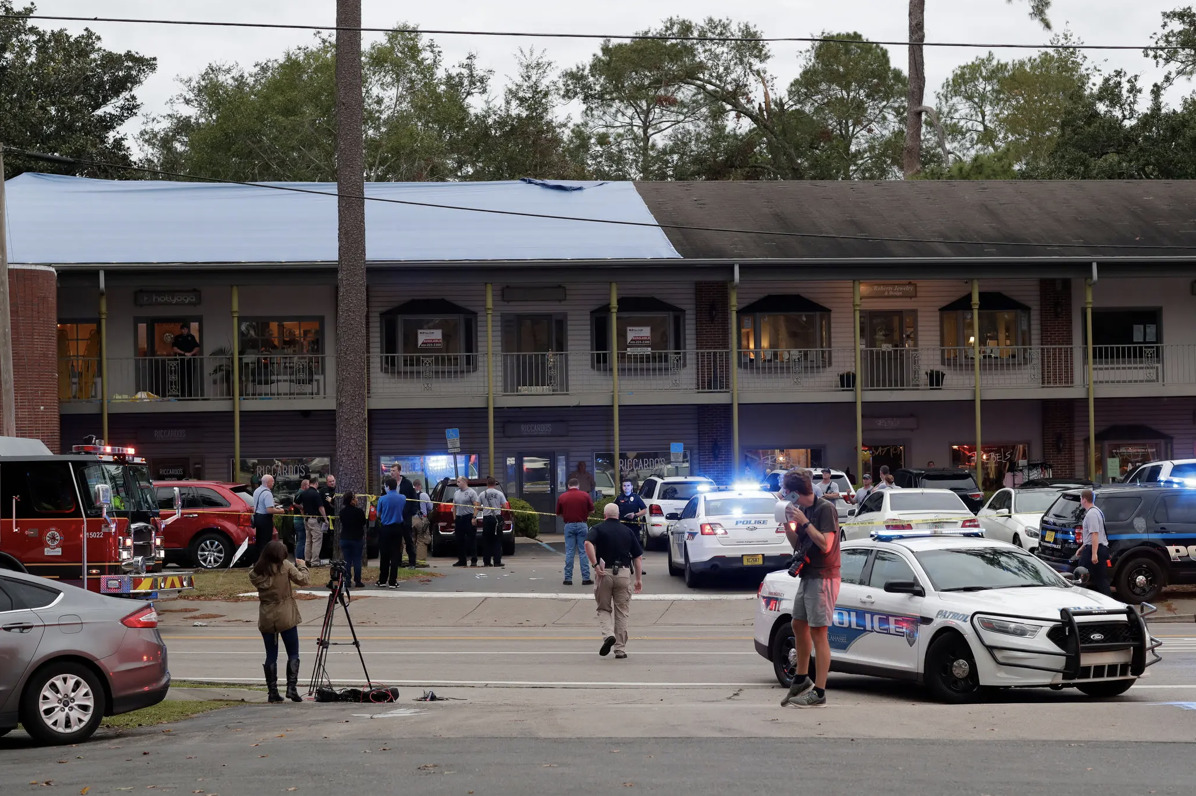
The cops arrived onsite three and one-half minutes after the first shot was fired, which is frankly pretty amazing. However, by then it was all over. Binkley and Van Vessum were already dead, and the loser Beierle had taken his own life.
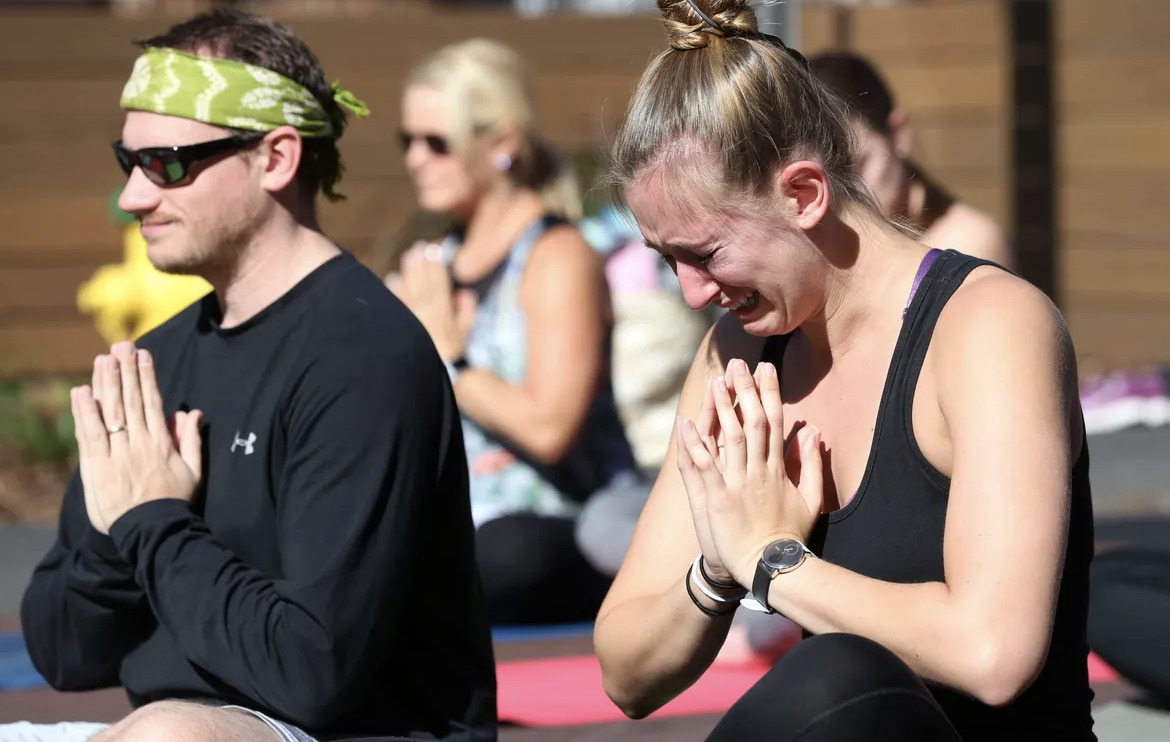
There were subsequently tributes aplenty to the innocent victims of this egregious rampage. The following day an instructor at Tallahassee Hot Yoga led a yoga class specifically intended to heal the community in the middle of a nearby street. The following year, Maura Binkley’s parents sued Tallahassee Hot Yoga and the property owners for failure to provide adequate security measures.
Ruminations
There is always ample blame to go around in horrible situations like this. There are those who will immediately attack the gun, but this example is even more tenuous than is typically the case. This wasn’t an “assault weapon”–whatever that actually is–or some uber-deadly implement of war. It was just a pistol. Even hypothetical magazine capacity restrictions wouldn’t have touched this one. Scott Beierle was just a really horrible person.

The owners of the yoga studio got sued for what exactly? I could post some scary-looking guy with a black rifle at the front door of my business, but I doubt that would do much to enhance my patient flow. Scott Beierle is the reason I carry a gun every time I’m not asleep or in the shower. When seconds count the cops are often only minutes away. Their response was, per usual, absolutely incredible. It is simply that bad stuff like this typically unfolds very quickly.
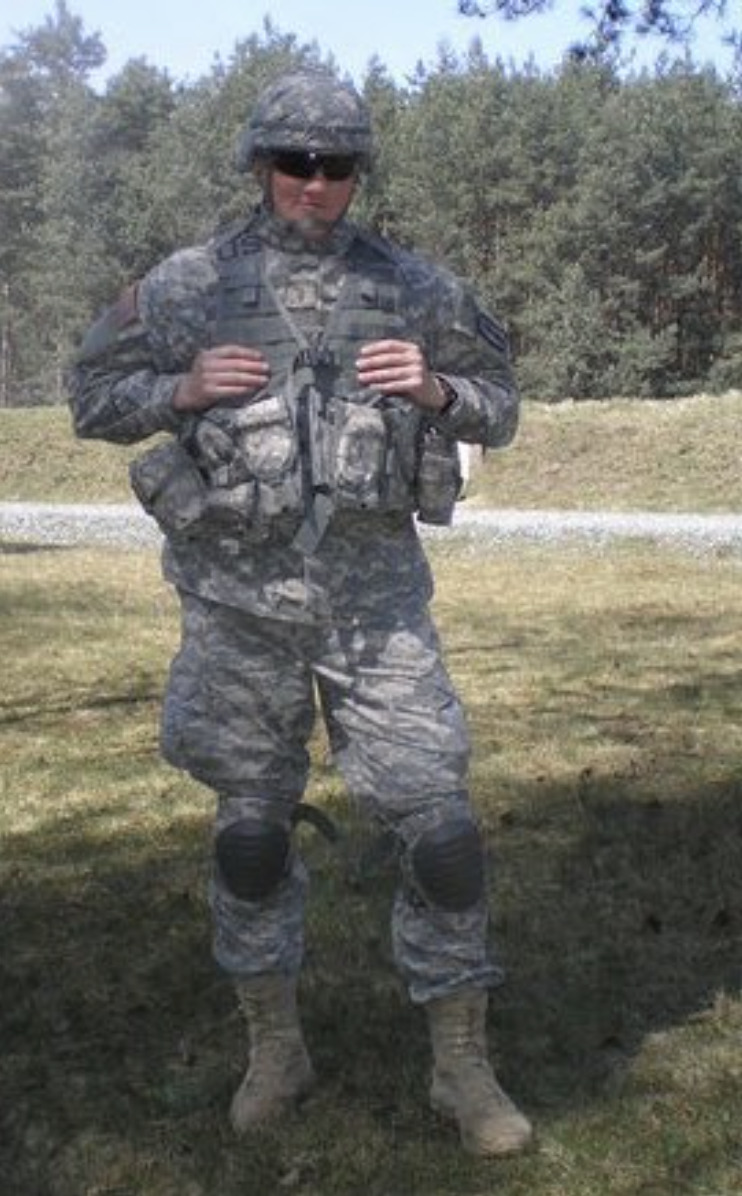
I would assert that Scott Beierle is not the problem. Scott Beierle is a symptom of the problem. When I was a kid, stuff like this never happened. Now it seems to happen all the time. What exactly changed?

A point of personal privilege–the absence of light is dark. Similarly, the absence of God is godlessness. Our culture has ejected God from our public spaces and embraced a pervasive depressing nihilistic humanism.
If we persist in raising our kids to believe that life doesn’t matter and that sex is the ultimate end-all then we should not be surprised when the Incels of the world become convinced they have nothing to live for and take it out on the rest of us. Jesus is the only thing I have found that reliably displaces the darkness, even such darkness as Scott Beierle.

I have a friend with more testosterone than sense. He and a college buddy found themselves on the Mexican border during Spring Break several years ago with some spending money and a little time. They were young, bulletproof, and immortal, so they figured they’d wander over and spend the day exploring Juarez on foot.

These two pale gringos were having a simply grand time taking in the sights. However, in short order, they got lost. These were the days before ubiquitous GPS-equipped cell phones, so they really were on their own. Soon they found themselves in a bad neighborhood with the locals looking at them all hungry-like.

Just when things seemed bleakest these two stupid American college kids happened upon a pair of uniformed Mexican police officers and innocently attempted to ask directions. In response, the two Mexican cops drew their weapons and robbed the young men of all their accumulated possessions.

You didn’t need a passport to travel to Mexico back then, so they did eventually get back over the border. However, they lost their wallets, watches, and everything else of value they had on their persons. This was their rude introduction to the realities of police corruption in a Third-World country.
Relativity

It is in vogue to denigrate and even assault the police in America these days. Quite a few politicians have built successful careers around the practice. However, we have no idea what truly bad police really look like. In America, if you get in trouble with precious few exceptions you can call 911 and some selfless guardian with a gun will show up to help you out. The rare exceptions get all the press, but when the zombies start staggering up the cul-de-sac even the most ardent police-bashing anarchist will eventually pick up the phone.

Today’s sordid episode gives us a glimpse into the dark realities of life in the favelas, the sprawling lawless slums of Rio de Janeiro, Brazil. In these strange spaces, drug cartel foot soldiers openly packing automatic weapons patrol the streets around police stations. The militarized police force conducts massive armed operations, but shadow organizations of current and former cops engage in extra-judicial killings at the behest of powerful figures both inside and outside of government. It is suspected that this corruption infects the Brazilian government at all levels.
The Target

Marielle Franco was born in the summer of 1979 in Mare, a slum area in Northern Rio de Janeiro. She began working to help support her family at age eleven. She had a daughter at age 19 and raised the child as a single mother. Franco was openly bisexual and lived with her partner Monica Benicio from 2017 until her death.

Franco held a Master’s degree in public administration and was an avowed socialist. Her resume included qualifications as a sociologist, feminist, and human rights activist. In 2016 she won a seat on the Rio de Janeiro city council. She used her political pulpit to speak out vociferously against police corruption. This made her some very dangerous enemies.
The Setting

Crime in urbanized Brazil is so extensive as to be difficult for the civilized mind to comprehend. Many to most of the refugees flowing toward our southern border are fleeing such sordid stuff as this. In the face of well-funded and ruthless gangs driven by drugs, murder, and rampant unfettered lawlessness, many police organizations exceed their official mandate. It’s like a bad movie.

Even if they originally meant well, absolute power corrupts absolutely. In the favelas of Rio, that means shadowy milicias comprised of trained law enforcement officers who undertake extrajudicial killings without due process. While many times this means dead bad guys, it also results in substantial collateral damage as well. In darker spaces, it also means that political activists are targeted for termination based upon their cultural and social influence.
The Hit

On March 13, 2018, Marielle Franco posted this to Twitter, “Another homicide of a young man that could be credited to the police. Matheus Melo was leaving church when he was killed. How many others will have to die for this war to end?”

The following day Franco and her driver Anderson Pedro Gomes were returning home from a round table discussion titled, “Young Black Women Moving (Power) Structures.” This event promoted the empowerment of black women in impoverished Brazil. Ms. Franco’s press officer was also in the back seat. From out of the traffic a Chevy Cobalt pulled stealthily up alongside.

The passenger in the Cobalt then produced an HK MP5 submachine gun and fired a total of nine rounds in controlled bursts. Four bullets hit Franco—three in the head and one in the neck. She died on the scene. Her driver was struck by three rounds and was also killed. Her press secretary was injured but survived.
Details

Movies would have us believe that highly-trained hitmen accepting contracts from anonymous clients online have raised assassination for money to an art form. Reality is typically far removed from this stylized image. In many places, criminals will kill in exchange for drugs or even the right to pilfer the pockets of the deceased. In the case of Marielle Franco, however, this job truly was professionally executed.

The kill zone was a city street amply covered with surveillance cameras. However, somebody with the skill and access to do so had deactivated the cameras covering the area at the precise moment of the hit. The cartridge cases recovered at the scene were traced to a shipment sent to Brasilia’s federal police force in 2006. Police officials initially alleged that the shipment had been stolen from a local post office though they later retracted this claim.

The HK MP5 submachine gun incorporates a fluted chamber to smooth extraction and enhance reliability. As a result, fired cases from an MP5, or any roller-locked HK firearms for that matter, demonstrate distinctive longitudinal lines. No other military weapon in common use marks its empties in this manner. This identified the murder gun as a fairly rarefied piece of iron.
The Weapon

The HK MP5 traces its roots all the way back to the Second World War and the German MG42 belt-fed machinegun. The previous MG34 had revolutionized Infantry combat. For the first time maneuver elements were afforded truly man-portable, rifle-caliber, belt-fed firepower mobile enough to keep pace during an Infantry assault. However, the MG34 was meticulously machined with tight tolerances. This made the gun heavy, expensive, and finicky.

The MG42, by contrast, was formed predominantly out of stamped steel pressings that could be churned out cheaply by semi-skilled workers. The beating heart of the MG42 was its roller-locked, delayed-blowback action. This system utilized a pair of roller bearings that cammed into recesses milled into the breech face. The end result was cheap, rugged, and reliable.


In the closing days of WW2, the Germans adapted this system to drive a prototype assault rifle. The StG 45 was an evolutionary development of the StG 44 and used the roller-locked system to fire the 7.92x33mm Kurz intermediate cartridge. Allied forces overran the arms factories where these guns were being developed, but the design was subsequently taken to Spain.

This effort resulted in the Spanish CETME rifle that eventually morphed into the German HK G3. This same action was rechambered for the 5.56mm, the 7.62x39mm, and, in 1964, the 9mm pistol cartridge. This pistol caliber SMG was originally designated the HK54. It eventually became known as the MP5.

The MP5 was first issued to German border police in 1966. It has since been produced under license around the world in more than 100 different variations and remains in series production today. Though its 800 rpm rate of fire is a bit spunky for my tastes, the MP5 remains one of the smoothest submachineguns ever produced. The takedown of the Iranian embassy in London on May 5, 1980, by the British SAS wielding HK MP5 SMGs on international television, sold untold thousands of the guns to military and LE users around the globe.
The Aftermath

Brazilian police investigated Ronald Paulo Alves Pereira and Adriano Magalhães da Nóbrega in connection with the killings. Both men had been honored by Jair Bolsonaro, the current President of Brazil, for their police service in the early 2000s. Nóbrega purportedly headed one of these extrajudicial paramilitary groups active in Brazil called “The Crime Bureau.” He was shot to death after supposedly firing upon police who came to arrest him in northeastern Bahia state. Whatever secrets he held went with him to the grave.

Brazilian police also arrested Ronnie Lessa and Elcio Vieira de Queiroz roughly a year after the shooting. Lessa was purportedly the triggerman, while de Queiroz was alleged to have driven the Cobalt. Both men were former members of the military police. One was also a previous neighbor of current Brazilian President Jair Bolsonaro in a gated luxury apartment complex in Rio. Both Lessa and de Queiroz denied involvement.

I read quite a lot about this sordid situation pulling this article together and still don’t even begin to understand it. Allegations of corruption run all the way up to the Presidency. Various players served together in either the military or elite Law Enforcement units and seem connected in ways that are impossible to untangle. However, the take-home point is that today’s American institutional Law Enforcement challenges pale in the face of true corruption.

